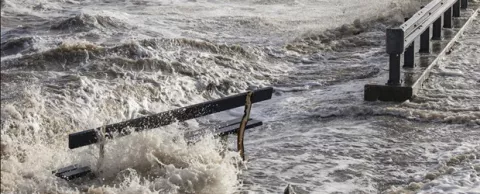
Our story summarizes new research that should interest city officials, particularly those in coastal communities subject to frequent damaging storms. In addition to explaining why wetlands are useful in disaster situations—and this is a key takeaway—the story explains why researchers say their study provides a means to determine the value of wetlands and the incentives to encourage their protection and restoration. — Doug Peeples
Tropical storm Sandy caused what has been estimated at $50 billion in flood-related damages in the northeastern U.S., and many lives were lost. But recently completed research by the University of Southern California Santa Cruz, the Wildlife Conservation Society and others concluded that the aftermath could have done more damage.
A summary of the research published in Hakai Magazine explained that coastal wetlands reduced property damage by up to $625 million.
How did that happen?
Put simply, the wetlands absorbed some of the shock from the wave energy coming ashore in addition to rising water. The project, which took two years to complete and incorporated assessment models used by insurance companies, determined that areas with wetlands experienced an average 10% reduction in property damage although savings in other areas were much higher. Researchers said New Jersey alone, which suffered extensive damage from Sandy, saw a savings of $425 million in property damage.
But it didn't always work
Researchers also said wetlands sometimes had little or no effect on rising floodwaters and may have blocked normal water flow and caused even more damage than would have occurred otherwise, similar to the effect of sea walls and other similar defenses. But most of the failures when normal water flows were altered by man-made structures.
Michael Beck, lead marine scientist for the Nature Conservancy and an adjunct professor at the University of California, said the research provides a method for determining the value of wetlands and that "By doing this kind of modeling, wetland conservation and restoration could be considered in insurance premiums."
But Beck also pointed out that while cities spent billions on infrastructure projects like seawalls, much less was spent shoring up natural defenses (like planting sand dunes and ensuring fresh water flow into wetlands).
As Beck said, "We think a much greater portion of our post-disaster relief should go into natural resilience."
Smart Cities Council Readiness Challenge Grant
Would you like some help to make your city more resilient? The Smart Cities Council will award five American cities Readiness Challenge Grants to make better use of technology to better serve their citizens. It’s part of a White House commitment to help cities use technology more effectively. Start your application today.
Doug Peeples is a Portland, Oregon-based writer specializing in technology and energy. Follow @smartccouncil on Twitter.



